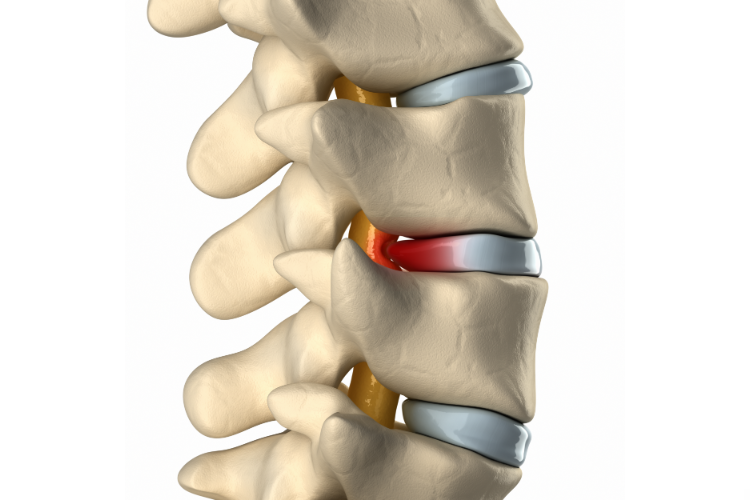The temporomandibular joint (TMJ) acts as a crucial hinge connecting your jawbone to your skull, allowing you to speak, chew, and express emotions. When this joint becomes misaligned or dysfunctional, it can cause a variety of issues, collectively referred to as temporomandibular joint disorders (TMD).
These can range from mild discomfort to severe pain and restricted jaw movement. While treatment often focuses on the jaw itself, upper cervical chiropractic care takes a different approach by examining the relationship between neck alignment and TMJ function.
Dr. Lisa Olszewski from Precision Spinal Care in Chelsea, MI, sheds light on how addressing cervical spine health can unlock relief for those suffering from TMD.
Rethinking TMJ Dysfunction: It’s More Than Just the Jaw
When people think of TMJ dysfunction, they often attribute the problem solely to the jaw joint. However, the root cause can be much broader. The temporomandibular joint doesn’t function in isolation; it’s part of a complex network involving muscles, nerves, and bones—all of which are influenced by the alignment and functionality of the cervical spine.
The upper cervical spine, particularly the atlas (C1) and axis (C2) vertebrae, plays a significant role in maintaining balance and stability throughout the head and neck. Misalignments in this region can create a domino effect, leading to tension and misalignment in the TMJ.
This connection is why many TMJ disorders persist, even with treatments like mouthguards or dental adjustments.
Symptoms of TMJ Disorders That Go Beyond the Jaw
TMD symptoms aren’t limited to jaw pain or clicking sounds.
They often extend into other areas, causing:
- Headaches or migraines
- Neck and shoulder pain
- Facial pain or swelling
- Earaches or tinnitus (ringing in the ears)
- Difficulty chewing or opening the mouth fully
- Fatigue in the jaw or face
These symptoms demonstrate how interconnected the jaw, neck, and nervous system truly are.
How Upper Cervical Chiropractic Supports TMJ Health

Relieving Pressure on the TMJ:
When the cervical spine is misaligned, it can place additional pressure on the muscles and joints surrounding the jaw. Upper cervical chiropractic adjustments aim to restore proper alignment to the spine, reducing compensatory tension in the TMJ and surrounding muscles.
Improving Nervous System Communication:
The upper cervical spine houses critical nerve pathways that influence jaw function. Realigning this area helps ensure optimal communication between the brain and the muscles controlling the TMJ, allowing for smoother, more coordinated movement.
Enhancing Body Balance:
TMD is often aggravated by poor posture or imbalance in the body. Upper cervical care works to correct foundational postural issues, reducing strain on the jaw and creating an environment for natural healing.
Breaking the Cycle of Pain
For many individuals, TMJ disorders create a vicious cycle: misalignment leads to pain, pain causes muscle tension, and tension further aggravates misalignment. Upper cervical chiropractic care targets this cycle at its source, addressing the underlying misalignments that contribute to dysfunction.
The adjustments themselves are precise and gentle, making them an excellent choice for those seeking a non-invasive approach to relief. Rather than masking symptoms with painkillers or muscle relaxants, chiropractic care focuses on empowering the body to heal itself.
Complementing Traditional Treatments
Upper cervical chiropractic isn’t a standalone solution for everyone with TMJ disorders.
Instead, it often works best in conjunction with other treatments, such as:
- Physical therapy to strengthen jaw and neck muscles.
- Stress management techniques to reduce teeth grinding and clenching.
- Dietary adjustments to avoid hard or chewy foods that strain the TMJ.
- Dental care to address bite misalignment or tooth grinding.
By combining chiropractic adjustments with these therapies, patients can experience more comprehensive relief.
A Patient-Centered Approach
Every individual experiences TMJ disorders differently, and there’s no one-size-fits-all solution. At Precision Spinal Care, Dr. Olszewski emphasizes a personalized approach to care.
During an initial consultation, she thoroughly evaluates the patient’s symptoms, medical history, and spinal alignment to develop a tailored plan. This holistic perspective ensures that all contributing factors to TMD are addressed.
Precision Spinal Care: Supporting Jaw and Neck Health
Dr. Lisa Olszewski and her team at Precision Spinal Care in Chelsea, MI, are dedicated to helping patients find relief from TMJ disorders and other conditions affecting the spine and musculoskeletal system.
Serving areas like Dexter, Grass Lake, Ann Arbor, and beyond, they specialize in upper cervical chiropractic care that not only addresses immediate discomfort but also fosters long-term wellness.
If you’re struggling with jaw pain, headaches, or other symptoms of TMJ dysfunction, consider exploring the benefits of upper cervical chiropractic care. Contact Precision Spinal Care today to learn how gentle, precise spinal adjustments can support your recovery and help restore your quality of life.
Medical Disclaimer:
This content is for informational purposes only and is not intended as medical advice, diagnosis, or treatment. Always consult your chiropractor, physician, or other qualified health provider with any questions you may have regarding a medical condition.
Never disregard professional medical advice or delay in seeking it because of something you have read here.




